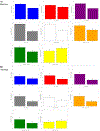Trends and instigators among young adolescent suicide in the United States
- PMID: 34547557
- PMCID: PMC8763572
- DOI: 10.1016/j.puhe.2021.08.004
Trends and instigators among young adolescent suicide in the United States
Abstract
Objectives: The present investigation examined the role of factors involved in suicide ideation and suicide attempt using a nationally representative sample of US high school students.
Methods: Data were collected from students in Grades 9-12 as part of the Youth Behavioral Survey (n = 11,328). Logistic regression models were used to examine factors associated with suicide ideation and suicide attempt. Variables included demographic characteristics (grade, sex, and race), psychosocial factors (physical fighting, sexual violence, sports participation, bullying, and electronic bullying), and substance use (cigarette usage, marijuana usage, and alcohol usage).
Results: The factor most associated with suicide ideation was bullying (either electronic or physical), whereas the factor most associated with suicide attempt was sexual violence followed closely by physical bullying.
Conclusions: The multitude of instigators and commonality among gender, ethnicity, and socio-economic status give an indication of how to prevent suicide and who to target information regarding the hazards of suicide.
Keywords: Adolescents; Suicide attempt; Suicide ideation.
Copyright © 2021 The Royal Society for Public Health. Published by Elsevier Ltd. All rights reserved.
Conflict of interest statement
Competing Interests:
None
Figures


References
-
- Plemmons G, Hall M, Doupnik S, Gay J, Brown C, Browning W, … & Rehm K (2018). Hospitalization for suicide ideation or attempt: 2008–2015. Pediatrics, 141(6), e20172426. - PubMed
-
- Curtin SC (2020). State suicide rates among adolescents and young adults aged 10–24: United States, 2000–2018. - PubMed
-
- Karthick S, & Barwa S (2017). A review on theoretical models of suicide.

